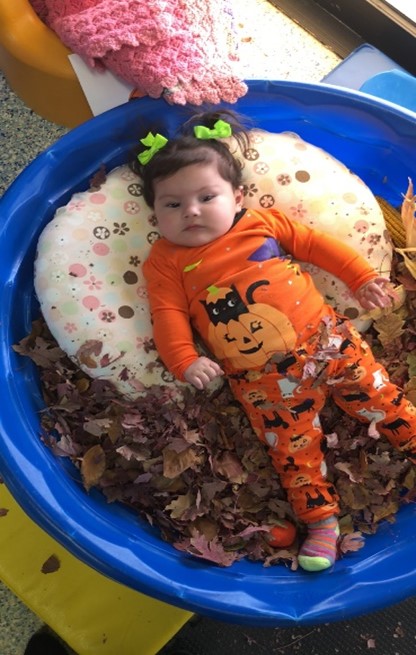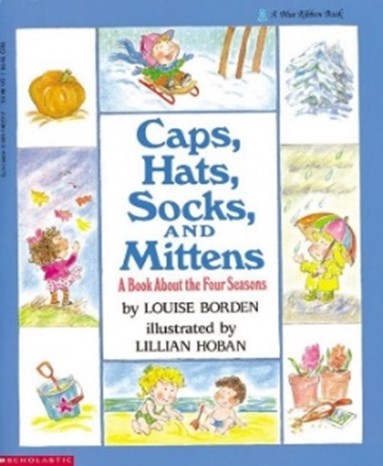Exploring the Seasons With Our Senses
Let’s learn outside! It’s imperative that children with visual impairments use their senses to learn about the world around them. This includes learning about nature and the outdoors. In this learning experience we go outside with our child and go on a hands-on nature walk. What does the grass feel like? What does it smell like? What does it look like? What does it sound like? How does nature change depending on the season?
|
Duration
This activity will take 10 to 30 minutes depending on your child’s mood and interest.
Materials Required
No specific materials are needed for this activity.
|
Activity Steps
1. The first step involves taking a minute or two to think about things you hear, smell, see, feel, and touch in nature. Think about words you might use to describe nature to your little one: windy, sunny, cloudy, quiet, noisy, warm, chilly, fresh, stinky, smoky, etc. Does it smell like rain? Is the grass bumpy when you walk over it or ride over it in the stroller?
2. Have a clear beginning to the activity. Tell your child that you are going outside on a nature walk. Try singing a song to indicate the beginning of the activity. It can be sung to any tune you would like. To the tune of “Going on a Bear Hunt,” you could try singing “Going on a Nature Walk, I Wonder What I’ll Find.” Here is a link to the song if you are interested: https://www.youtube.com/watch?v=WzIcu6tbEko You can also use an object cue to indicate the beginning of the activity. An object cue could be something from nature like a stick or pinecone. 3. As you are getting ready to go outside, talk about the weather. “We are putting our coat on because it’s cold outside.” “Let’s get our sunglasses and hat because the sun is bright.” “Let’s put our boots on to splash in the rain puddles or tromp in the snow.” 4. Go outside and stand for a while to listen to the sounds and take some deep breaths. Think about what you hear, smell, and feel. Label it for your child. “I hear the birds chirping.” “I hear Mr. Anderson’s noisy lawnmower. Smell the fresh cut grass!” Reinforce the talk about weather. “Oh, the sun feels warm on my face.” “It’s windy. I hear the leaves rustling.” 5. As you start your walk, point out things in nature that you want your child to notice. Show your child what you want them to do. For example, find something on your nature walk that you want to talk about. “Oh, there’s a long stick. Let’s touch it. It feels bumpy and is sharp on the end.” 6. Observe your child and follow their lead. What are they moving toward, turning toward, or pointing at? What do you think they might be interested in? You might need to pick up the object for your child. Label it and talk about its attributes such as weight, size, texture, shape, etc. “You found a BIG rock. That one is HEAVY, and it feels SMOOTH on top.” Encourage your child to put the rock in a container. Is it too big for the container? “This one is too big for your basket. Let’s find a smaller one.” 7. Continue to follow your child’s lead. Are there other rocks that you can collect and compare to each other? What else can you find on the ground? Are there sticks, pinecones, grass, leaves, etc.? If your child finds sticks, pinecones, or leaves, draw their attention toward a tree. What does the bark feel like? Is it rough or smooth? Where are the leaves? Are they high up in the tree or can you reach them? Where does a pinecone come from? Does the tree have leaves or needles? Smell the trunk of the pine tree. Does it smell like vanilla or butterscotch? Smell the needles. Leaves are smooth and flat. Needles are long and poky. In fall, leaves might be dry and crunchy, and then turn from green to red, yellow, or orange. 8. Have a clear ending to the activity. When it’s almost time to go, give your child a cue by saying something like, “It’s almost time to go home. Let’s pick one more thing in nature to touch and talk about and then home we go.” Make up a song to sing. “We are done with our nature hunt, it’s time to go home.” |
Tips
|
Extension Activities
|


